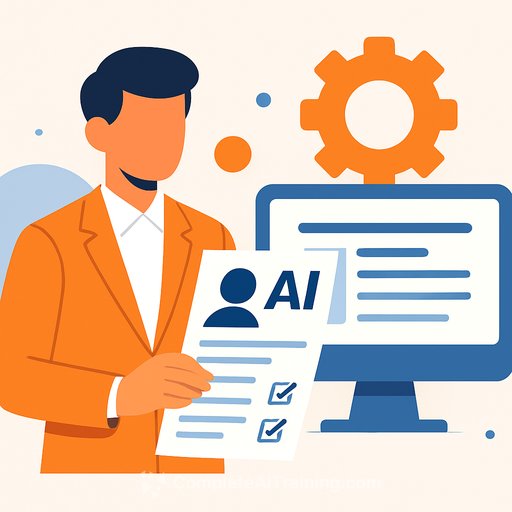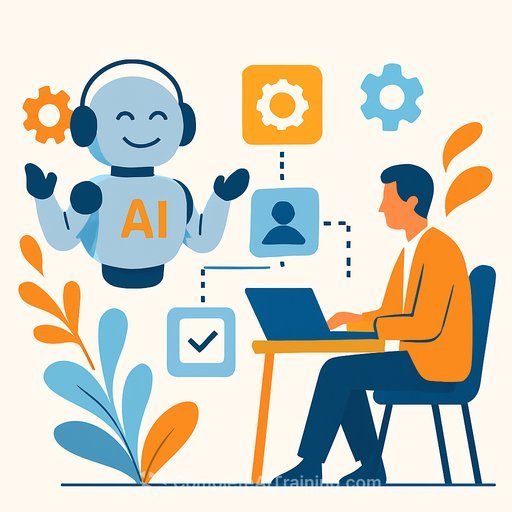Buyers no longer browse websites or fill out forms like they used to. Instead, they turn to AI tools for quick, anonymous research—consulting AI agents, private Slack groups, review sites, and search snippets before your marketing pixel even fires. If your go-to-market (GTM) strategy still relies on clicks and form submissions, you’re missing the real signal.
Then → Now → Next
Understanding how GTM has evolved helps you adapt and stay ahead.
- Then (2020): Marketing, sales, and customer support operated in silos, each with separate KPIs and messaging. Buyers got confused.
- Now: AI agents sift through Slack conversations, track intent on platforms like G2, and even ghostwrite outreach. Slack usage among B2B buyers jumped 80% from 2021 to 2024. Despite better signals, value delivery remains uneven, and buyers stay hard to pin down.
- Next: Momentum becomes the shared currency. Cross-functional teams power a dynamic marketing system that enables buyers to self-educate and self-score, guiding them efficiently to closed deals.
Why the Old Way No Longer Works
Traditional SDR cadences depended on gated forms. Customer success teams relied on static personas. Product teams shipped features with no visibility. AI has wiped out these silos by delivering answers instantly. The company with the freshest, clearest signal wins the buyer’s shortlist before any direct outreach.
Two Plays to Build Organizational Momentum
These two connected strategies help align teams and build early trust with buyers. Run them together to turn ideas into measurable progress.
1. Dynamic Buyer Blueprint
When marketing, sales, and support each describe your ideal buyer differently, your message gets mixed up internally and in the market. This play creates one clear, AI-readable buyer narrative that all teams use.
- Context: Currently, each team writes its own buyer prompts, resulting in multiple conflicting buyer definitions.
- Objective: Deliver one concise, testable buyer sentence that matches market signals and AI agent interpretations.
- Desired outcomes:
- Reduce prompt variance by 50% within a quarter.
- Appear in the top three results on AI platforms like Perplexity for that shared prompt.
High prompt variance means marketing ads, sales scripts, and onboarding materials target different buyers. That wastes effort and weakens AI signals, letting competitors tell a sharper story.
How to run it: Hold a 15-minute quarterly session to align teams using a shared execution tracker (tools like Notion, Google Workspace, or Microsoft Office 365 work well).
Example: A five-person SaaS startup cut six ideal customer profiles (ICPs) down to one in a single session. They launched a 90-second ROI calculator and increased their answer share from 18% to 43% in six weeks—without adding ad spend.
2. Social Proof-Stack Ladder
Buyers don’t just want to see logos anymore. They want recent, relevant proof that others like them succeeded recently.
- Context: A single logo no longer impresses. Buyers ask AI, “Who solved this problem last quarter?” A layered social proof stack—combining volume, stories, outcomes, and thought leadership—scores higher with AI and builds human trust.
- Objective: Replace static badges with a living social proof stack that AI agents can read and prospects can trust.
- Desired outcomes: Refresh one proof layer every 60 days. Win rates improve because buyers come to meetings already convinced.
How to run it: Launch a 30-day process where a Slack bot pings your team whenever a proof layer needs updating. Marketing then updates a “Fresh Proof” slide weekly.
Tool tip: Use a Notion database titled “Social Proof Stack” with fields like Date, Rung, Metric, URL, Owner, and Next-refresh. Automate reminders when proof ages beyond 60 days.
Example: After refreshing their proof stack, a $40 million ARR platform saw G2 traffic increase 28% and demo-to-close time drop from 45 to 32 days. Fresh proof accelerates buyer commitment.
Track Progress with Four Shared KPIs
Make buyer momentum visible by tracking four shared KPIs. Share these in your weekly GTM huddle. Set up alerts for any metric trending in the wrong direction for two weeks straight.
Frame GTM Performance in Financial Terms
To secure budget, speak finance’s language: risk, upside, and tradeoffs—not clicks and impressions.
- Lead with risk: “If answer share drops 3 points, we lose $350,000 next quarter.”
- Show upside: “An 8-point lift added $1.2 million pipeline and cut payback to 7 months.”
- Close with cost-neutral fixes: “Refreshing proof data costs $25,000 per quarter, offset by $28,000 saved from unused tools. Approve this swap to maintain our 46% share and $1.2 million pipeline upside.”
Plan to retire redundant tools and reinvest savings into A/B tests using the new buyer messaging versus legacy versions.
Move Forward as One Team
- Lock down a single buyer story with the dynamic buyer blueprint.
- Keep your social proof fresh and layered using the proof-stack ladder.
- Share four key KPIs every week to maintain focus.
- Communicate GTM impact in terms finance values: risk and cash flow.
This unified GTM approach helps your team meet AI-driven buyers on their terms, turning pipeline into closed deals instead of abandoned pursuits.
Your membership also unlocks:





